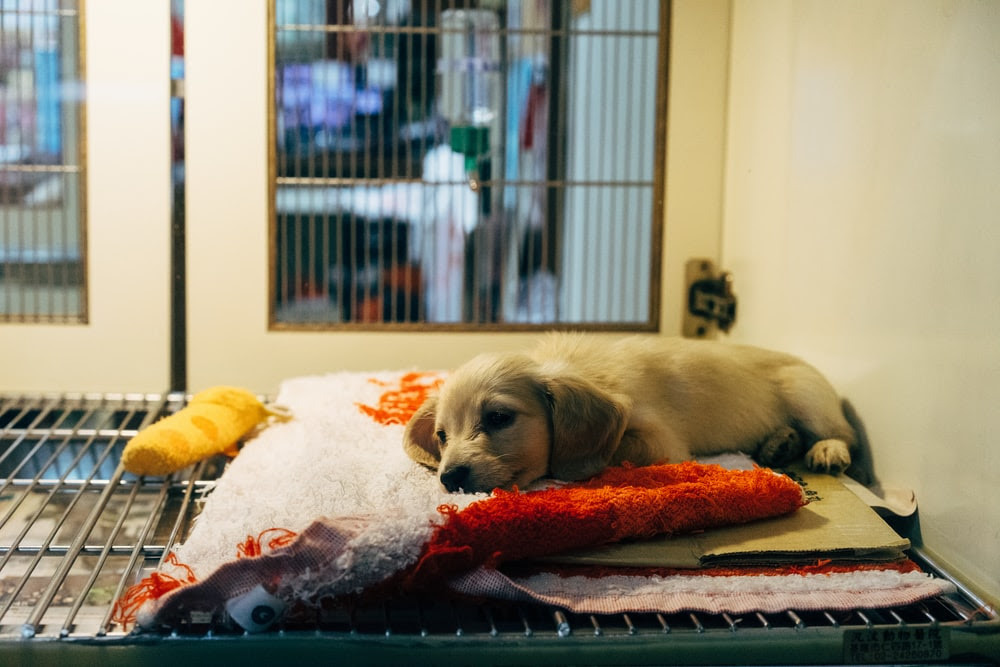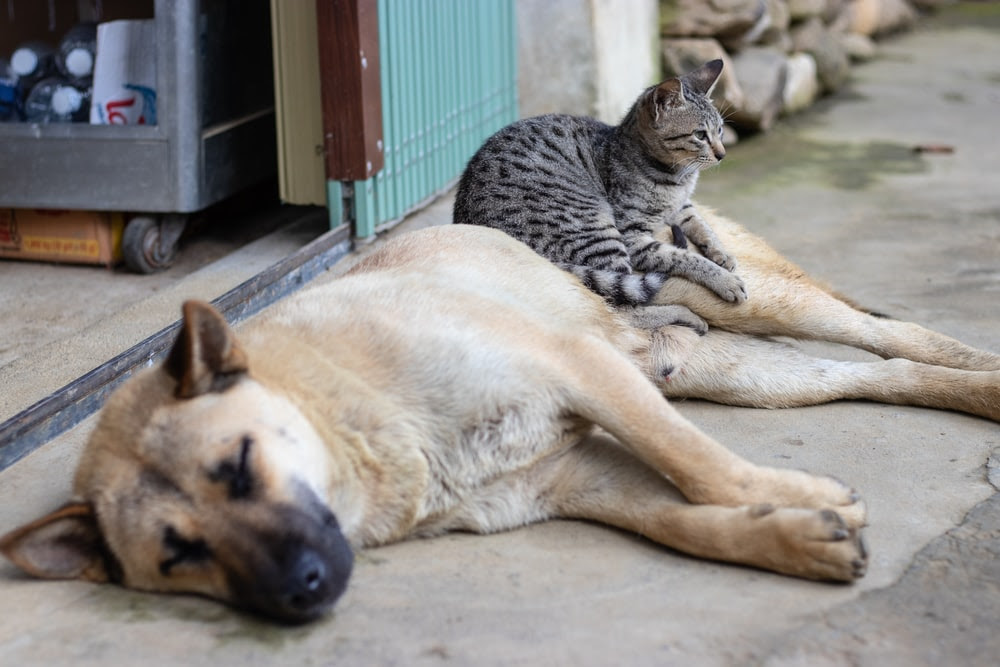A small number of pets (cats and dogs) worldwide have infected with the virus that causes COVID-19, mostly after close contact with a person with COVID-19. Some pets did not show any signs of illness, but those pets that did get sick mostly had mild disease that could be taken care of at home. Serious illness in pets appears to be extremely rare.
Tests for the virus that causes COVID-19 in animals are available for most types of pets, but testing is only recommended for animals that have symptoms and have been exposed to a person with COVID-19. If your pet is sick and you think it might be from the virus that causes COVID-19, talk to your veterinarian.
The risk of pets spreading COVID-19 to people is considered to be low. There is no reason to abandon or surrender pets that test positive for the virus that causes COVID-19.
If you have COVID-19, do not take your pet to the veterinary clinic yourself. Call your veterinarian first and tell them you have COVID-19, but that your pet needs care. Some veterinarians may offer telemedicine consultations or other plans for seeing sick pets. Your veterinarian can evaluate your pet and decide the appropriate steps for your pet’s care.
If your pet tests positive for the virus that causes COVID-19

Depending on your pet’s symptoms, your veterinarian may recommend that your pet be isolated at home, instead of staying in the hospital.
If your veterinarian recommends home isolation and you are able to care for your pet at home, follow this advice to protect yourself and others.
What you need to know
If your pet tests positive for the virus that causes COVID-19, isolate the pet from everyone else, including other pets.
Do not wipe or bathe your pet with chemical disinfectants, alcohol, hydrogen peroxide, or other products, such as hand sanitizer, counter-cleaning wipes, or other industrial or surface cleaners.
Only a small number of pets worldwide have been infected with the virus that causes COVID-19, mostly after close contact with a person with COVID-19. Some pets did not show any signs of illness, but of those pets that did get sick, most had mild disease that could be taken care of at home.
If you think your pet is infected with the virus that causes COVID-19, call your veterinarian first to discuss what you should do.
What to do if your pet gets sick
Keep your pet at home, except to get medical care
Talk with your veterinarian regularly. Call before you take your pet to the veterinary clinic. Be sure to alert your veterinarian if your pet has trouble breathing, or if you think it is an emergency.
Although most pets only have mild symptoms or no symptoms, we are still learning about how they are affected by the virus. Even if your pet appears to be feeling better, avoid the activities below until your veterinarian or public health official has determined that it is safe for your pet to do so or your pet has met the guidance to end their isolation. Activities to avoid include:Visits to veterinary hospitals, without calling the veterinarian first
Visits to human healthcare facilities or schools
Visits to parks (including dog parks), markets, or other gatherings where there are many people and pets, such as festivals
Visits to the groomer, including mobile grooming salons
Visits to pet daycare or boarding facilities
Other outings such as playdates or visiting other homes, with or without pets
Using dog walkers or pet-sitters that live outside your home
Separate your pet from people and other pets in your home
Have the pet stay in a designated “sick room” (such as a laundry room or extra bathroom) if possible, or otherwise be separated from people and other pets. This is the same way a person with COVID-19 would separate from others in their household.
Avoid contact with the pet as much as possible, including, petting, snuggling, being kissed or licked, and sharing food or bedding.
If possible, provide a separate litterbox or bathroom area from other pets.
If you have a private backyard, limit your dog to the backyard. If you must walk your dog, limit it to bathroom breaks only, stay close to your home, and keep your pet at least 6 feet away from other pets and people. Do not let other people touch or interact with your dog.
Cats should be kept inside. Do not allow cats that have tested positive for the virus that causes COVID-19 to roam outside.
Wear gloves when cleaning up after your pet, and place feces (poop) or litterbox waste in a sealed bag before disposing in a trashcan lined with a trash bag. Always wash your hands with soap and water immediately after cleaning up after your pet. There is no evidence to suggest that waste from infected pets needs any additional disinfection.
Provide bedding, bowls or containers, treats, and toys that are separate from those used by other people or animals in the household.
Disinfect bowls, toys, and other animal care items with an Environmental Protection Agency-registered disinfectantexternal icon and rinse thoroughly with clean water afterwards.
Soft items like towels, blankets, and other bedding, can be safely laundered and reused. Dirty laundry that has been in contact with an ill animal can be washed with other items.
Monitor your pet’s symptoms
It is important to keep track of your pet’s symptoms during home isolation. If you think your pet has new symptoms or is getting worse, call your veterinarian.
Pets sick with the virus that causes COVID-19 may have:
Fever
Coughing
Difficulty breathing or shortness of breath
Lethargy (unusual laziness or sluggish)
Sneezing
Runny nose
Eye discharge
Vomiting
Diarrhea
Follow all care instructions from your veterinarian. Your veterinarian may have you keep a written log of your pet’s symptoms.
If your pet develops new symptoms or seems to be getting worse, including having trouble breathing, you should call your veterinarian right away. Your veterinarian may be able to advise you over the phone or may tell you to bring your pet to their clinic or go to another clinic that can better care for your pet.
Protect yourself when caring for a sick pet
Follow similar recommended precautions as for people caring for an infected person at home.
If you are at higher risk for severe illness from COVID-19, another household member should care for the pet, if possible.
People should wear a mask and gloves in the same room or area as the sick pet.Animals should not wear a mask. Do not try to put a mask on your pet.
Use gloves when handling the pet’s dishes, toys, or bedding and when picking up poop. Throw out gloves and place waste material or litterbox waste in a sealed bag before throwing away in a trashcan lined with a trash bag. Always wash your hands with soap and water immediately after cleaning up after your pet.
Clean your hands regularly throughout the day.Wash hands: Wash your hands often with soap and water for at least 20 seconds each. Make sure everyone in the home does the same, especially after touching the sick pet or handling their dishes, toys, or bedding.
Hand sanitizer: If soap and water are not readily available, use a hand sanitizer that contains at least 60% alcohol. Cover all surfaces of your hands and rub them together until they feel dry.
Do not touch your eyes, nose, and mouth with unwashed hands.
Clean and then disinfect:Follow cleaning and disinfecting recommendations found on CDC’s Cleaning and Disinfecting Your Home
Do not wipe or bathe your pet with chemical disinfectants, alcohol, hydrogen peroxide, or other products, such as hand sanitizer, counter-cleaning wipes, or other industrial or surface cleaners. There is no evidence that viruses, including the virus that causes COVID-19, can spread to people or other animals from the skin, fur, or hair of pets. Using chemical disinfectants on your pet could make them very sick or kill them. Talk to your veterinarian if you have questions about appropriate products for bathing or cleaning your pet.
When to end home isolation
Follow your veterinarian’s advice for when it is safe for your pet to be around other people and animals. Some pets may need follow-up testing to see if they are still positive for the virus that causes COVID-19. Your pet can stop isolating if:
The pet has not shown symptoms for at least 72 hours without medical management;
AND:
It has been at least 14 days since the pet’s last positive test;
OR
All follow-up tests for current infection are negative.



Comment here